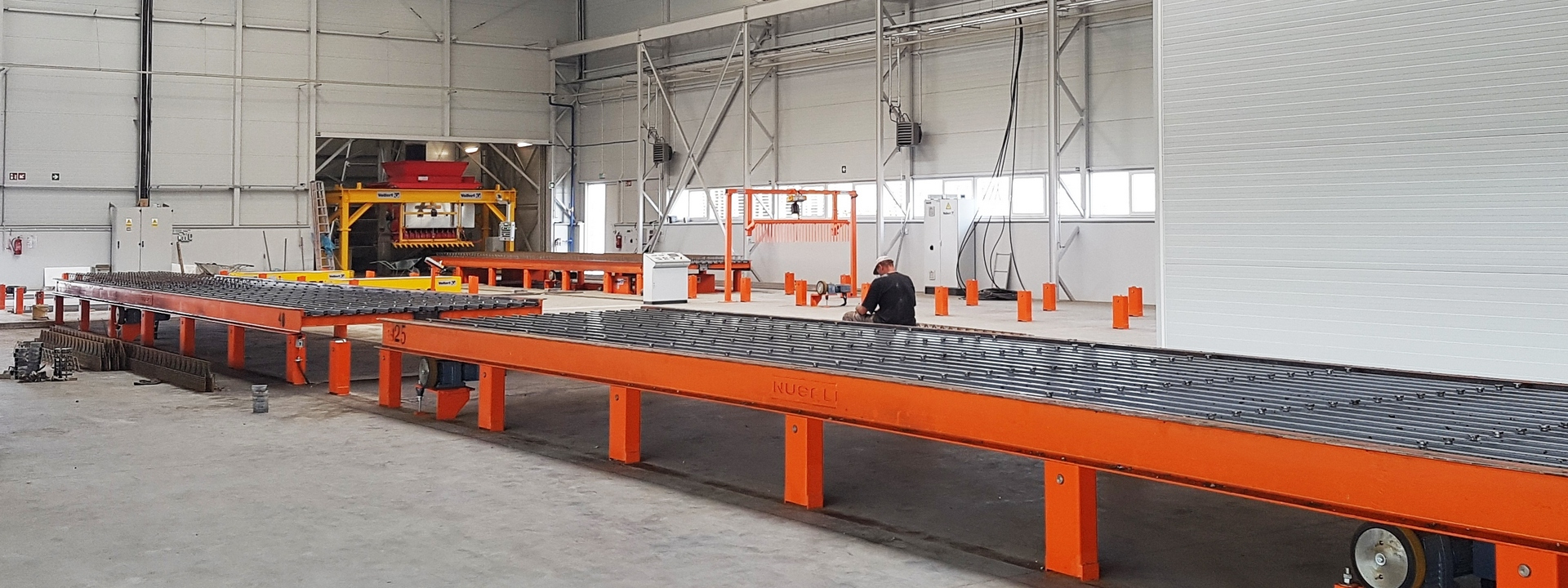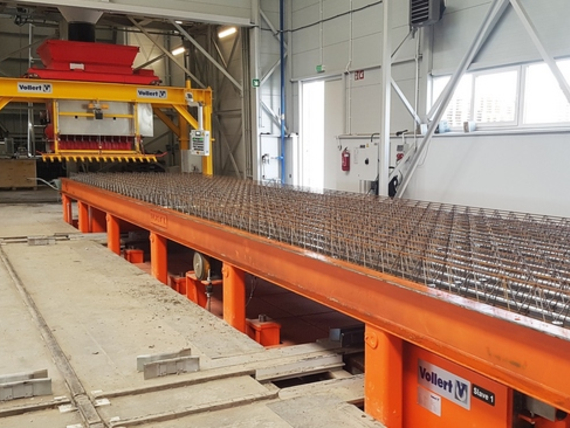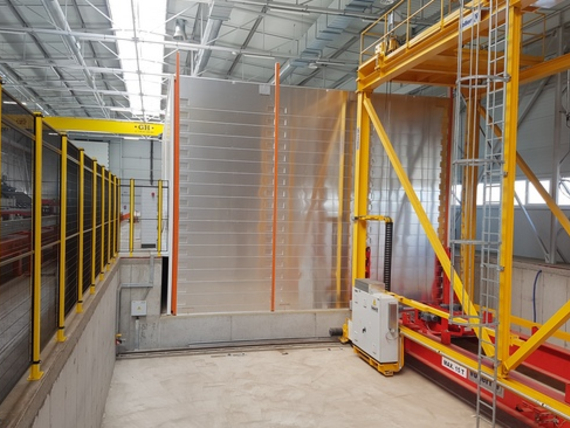In Poland, the TERIVA building system is very popular. Detached houses as well as multi-storey multifunctional buildings such as shopping centres and universities are being built with reinforced concrete ribbed slabs. The floor beams are laid directly on the masonry walls, hollow-body bricks are laid in the spaces and the projecting lattice truss reinforcement is fastened on site with in-situ concrete, as with floor slabs. In addition to the large span, the lower slab weight and high load-bearing capacity of the beam are significant advantages. The building materials manufacturer Uciechowski has been successfully producing concrete elements in Raszków for customers in the region of the city of Wielkopolskim for several decades, as well as for construction projects all over Poland. "However, with manual pre-production and a stationary formwork system, we were no longer able to meet the increasing demand from our customers. An initial contact with Vollert's concrete plant specialists led to the idea of a high capacity industrial production of TERIVA floor beams. We also wanted to offer our customers modern floor slabs in the future", says Robert Uciechowski, owner and managing director of the renowned building material manufacturer, describing the situation at the beginning of planning at the end of 2016.
50 circulation pallets each for up to 60 TERIVA floor beams
"We have transferred the tried-and-tested Vollert circulation system to the production of solid and semi-finished parts to TERIVA beam production," explains Daniel Krusche, Vollert's Project Manager. For this purpose, 50 existing steel pallets were comprehensively prepared in advance and modified for the later field of application, as well as further purchased. Decisive advantage: on a circulation pallet (13.5 m x 2.70 m), several 120 mm wide beams can be produced simultaneously, the side formwork is firmly mounted. "For this purpose, we specially developed the shuttering system along with a renowned shuttering manufacturer and adapted it to the Vollert circulation system," explains Robert Uciechowski. The beams can be made up to 8 m long. If we assume a beam length of 3 - 4 m we can produce up to 60 elements simultaneously ". For this purpose, a CAD-CAM controlled SMART PLOT plotter first records precisely the contours before the TERIVA shuttering profiles are manually positioned and the reinforcement grids inserted. A SMART CAST concrete spreader is used to apply the fresh concrete, with the separate discharge screws optimally controlling and filling the individual carrier chambers. The concrete is compacted using a low-frequency SMART COMPACT2 compaction station, creating a smooth exposed concrete surface. Insulated, gas-heated curing chambers ensure controlled hardening of the concrete. The 17-level shelf towers are controlled by means of a centrally installed, floor-mounted VArio STORE storage retrieval machine. A SMART LIFT lift-off traverse takes the finished TERIVA beams for loading and places them on the set-down framework.
The cleaning of the pallet surface was also specially adapted to TERIVA beam production. The VArio CLEAN pallet cleaner has two brush variants. If the shuttering profiles remain on the pallet for the next circulation cycle, a specially developed round brush cleans - like a toothbrush - the spaces and at the same time frees the scrapers from dirt and residual concrete. If, on the other hand, the shuttering profiles are removed again, a roller brush descends after a rough cleaning by a steel scraper and cleans the entire surface before the release agent is applied.
Vollert Control Centre ensures optimal production processes
Automated machine technology ensures a consistently high level of TERIVA beam quality. However, the decisive factor for maximum plant productivity is the VCC (Vollert Control Centre) production control system, which creates the order dispatch list, optimizes pallet allocations, determines storage and retrieval sequences, and manages curing times and loading processes. Statistical evaluations of plant efficiency are available at any time. Printouts of labels, pallet assignment plans or reports, make the production process transparent and the subsequent storage management simple.
"Both factors, machine technology and intelligent plant control were the cornerstones of the optimal start-up of the new production process in June 2018. With the new circulation technology, we were able to increase plant production capacity by 40% in the short term," says Robert Uciechowski. "In a next step, we plan to start the floor slab production. The basis for further growth has been laid".







